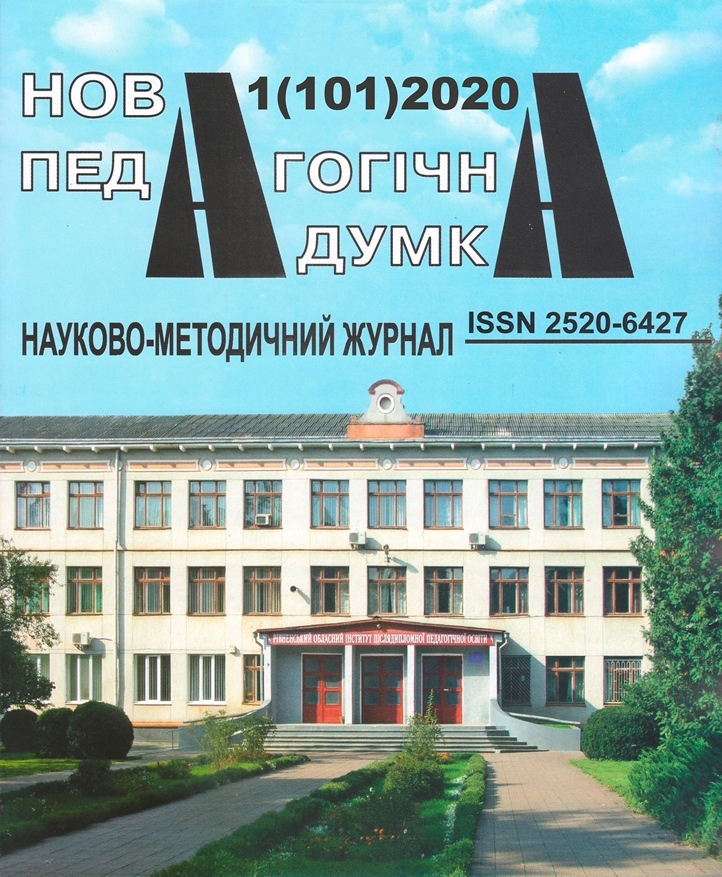MODERN MODELS OF LITERARY COMMUNICATION IN THE CONDITIONS OF THE NEW UKRAINIAN SCHOOL
Abstract
This article presents the modern models of communication according to the new state standards of the complete general secondary education. The author provides examples of the comparative and interpretive models of teaching the literature. The literary artistic discourse is shown as a model of the intertextuality and interpretation.
Evaluating of the artistic phenomena (ability to make a personal choice) became a significant trend. To find out with the help of fiction the key aspects of the human existence, to identify the significance of the content and the aesthetic value in the works of the mass and elite culture is of the great necessity for the reader now. But the evaluation of the aesthetic aspect is not possible without representation of the few similar works of art. Thus, analyzing the work of fiction, a comparative approach is needed. Consequently, the comparative approach is the second important conceptual background.
The increasing worldwide interpenetration of literatures led to the difficulties in the literary studies research. The isolated analysis of the literary works, the authors, the schools of literary theory and directions could not provide full, precise and reliable results any more. Thus, the international context and inter-literary relations should necessarily be considered, the appropriate methodology for detection and describing such relations must be developed.
Literary comparative studies can be regarded as the methodical art. It detects the connecting bonds of analogies, affinity and influence, makes literature closer to another forms of expression and knowledge. It brings facts and works of literature together, and it doesn’t matter whether they are close or apart in space and time. If they belong to different languages or cultures, are of the same tradition – all this will be done to describe, to understand and to evaluate them in the best way.





